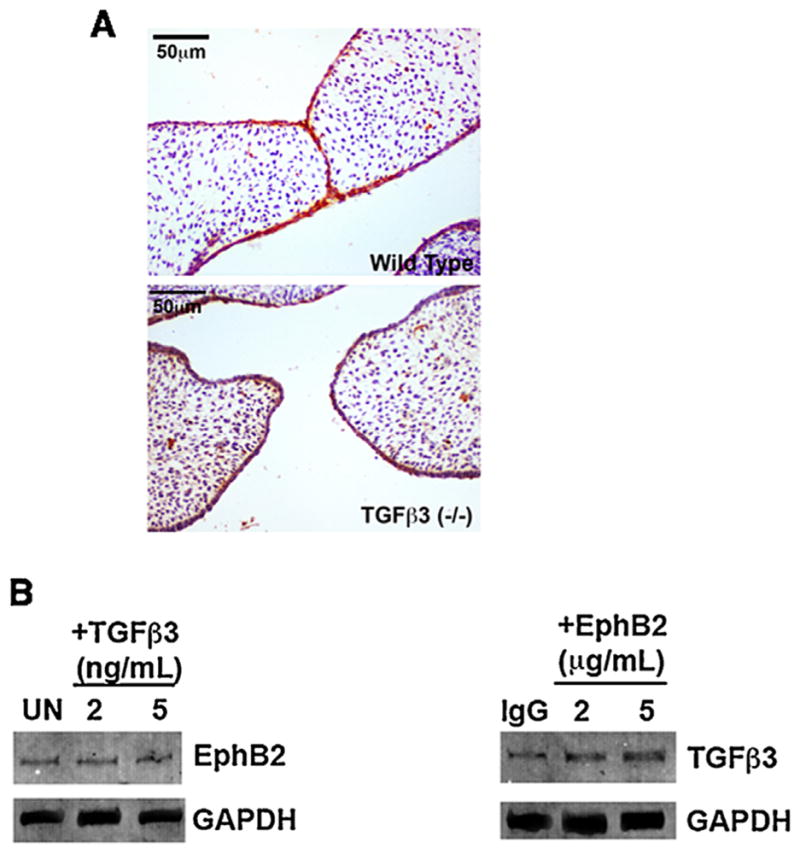Fig. 2.

Tgfβ3 is not required for EphB2 expression. (A) Sections of palates from wild type and Tgfβ3 knockout mice were stained with antibody against EphB2. Staining (reddish-brown, DAB) is apparent in the MEE with both genotypes. (B) Mouse palatal MEE cells were grown in the presence of the indicated doses of either 10 μM Tgfβ3 or 5 μg/mL EphB2/Fc for 48 h before being harvested for Western analysis with anti-Tgfβ3 or anti-EphB2. UN =untreated; IgG =IgG Fc treated control. Tgfβ3 treatment did not increase EphB2 levels while EphB2 treatment increased Tgfβ3 levels modestly. Thus, the ability of Tgfβ3 to cause palatal fusion cannot be explained by simple stimulation of EphB expression.
